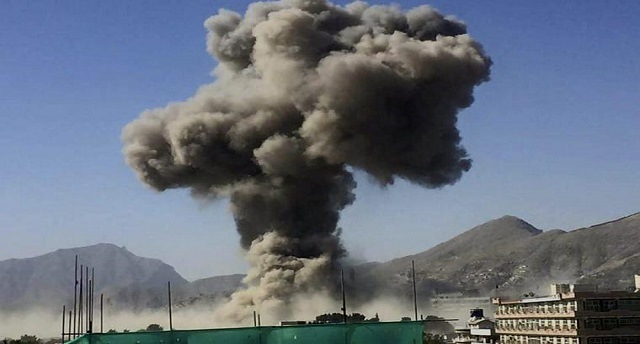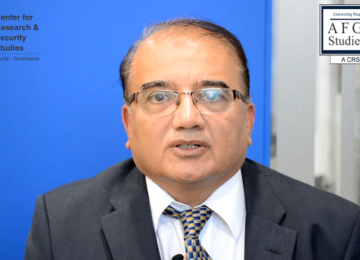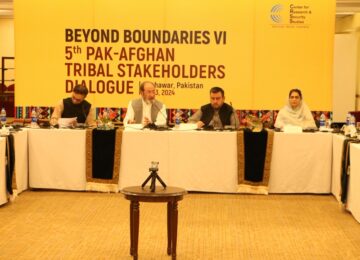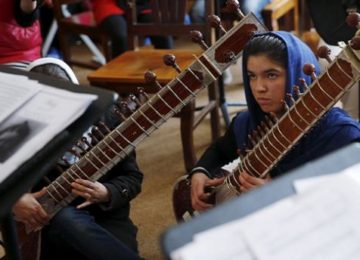Salient features of the Special Inspector General for Afghanistan Reconstruction (SIGAR)’s thirty-eighth Quarterly Report to Congress
— There has been a significant uptick in U.S. air strikes and special operations, with the U.S. dropping 653 munitions in October 2017. While this is a record high since 2012 and a more than three-fold increase from October 2016, these actions have yet to increase the Afghan government’s control over its population.
— Resolute Support reported 4,474 civilian casualties from June 1 to November 27, 2017—a 13% increase compared to the same period last year.
— From January 1 through November 26, 2017, 11 U.S. military personnel were killed in Afghanistan, and 99 were wounded. This is double the personnel killed in action compared to the same periods in 2015 and 2016.
— Despite $8.7 billion American taxpayer dollars spent on counter-narcotics efforts in Afghanistan, opium production and total area under opium cultivation have reached an all-time, up 87% and 63% respectively from the previous year. The total area under opium cultivation in Afghanistan approaches the area of Rhode Island.
— This quarter, DOD instructed SIGAR not to release to the public data on the number of districts, and the population living in them, controlled or influenced by the Afghan government or by the insurgents, or contested by both. This is the first time SIGAR has been specifically instructed not to release information marked “unclassified” to the American taxpayer. See p. 251 of the report for more information.
— The number of districts controlled or influenced by the Afghan government had been one of the last remaining publicly available indicators for members of Congress—many of whose staff do not have access to the classified annexes to SIGAR reports—and for the American public of how the 16-year-long U.S. effort to secure Afghanistan is faring.
— For the first time since 2009, Resolute Support (RS) classified the exact, assigned (actual) and authorized (goal) force strength and attrition data for the ANDSF as a whole, as well as each force element individually (ANA, ANP, AAF, etc.).
— For the second consecutive quarter, DOD also classified or otherwise restricted information SIGAR had previously reported including such fundamental metrics of ANDSF performance as casualties, attrition, and most capability assessments.
— The quarter’s essay warns against unrealistic expectations for mineral development: the meager results of a nearly half-billion U.S. investment in developing Afghan minerals should suggest to American officials that future efforts should be accompanied by polite skepticism, caution, risk management, and vigilance for unintended consequences.
— Despite Afghanistan’s large and well-documented resources, mining revenues in 2016 supplied only 0.3% of the country’s $6.5 billion national budget. Among other obstacles, plans to develop the country’s mineral resources have been stymied by insecurity, corruption, weak governance, and a lack of infrastructure.
— In its annual survey, the Asia Foundation found that only half of the Afghan respondents (52.3%) believed that reconciliation with the Taliban is possible. Additionally, approximately 15.7% of respondents expressed either “a lot” or “a little” sympathy for the Taliban.
— According to NAI, an organization supporting open media in Afghanistan, of 167 incidents of violence against journalists in 2017, the Afghan government was involved in 37%, whereas insurgents were involved in 40%.
— According to DOD, airstrikes destroying 25 drug labs in November in December equated to nearly $80 million of drug money eliminated and $16 million of direct revenue being denied to the Taliban. Based on DOD’s valuation, SIGAR questions the accuracy of these figures.
— The labs being destroyed are cheap and easy to replace, according to some estimates they only take three or four days to replace.
Full Quarterly Report: https://www.sigar.mil/pdf/quarterlyreports/2018-01-30qr.pdf
Quarterly Report by Section: https://www.sigar.mil/quarterlyreports/index.aspx?SSR=6
Report Photos: https://www.flickr.com/photos/sigarhq/albums/72157663045021457
Disclaimer: Views expressed on this blog are not necessarily endorsed or supported by the Center for Research and Security Studies, Islamabad.








